Category: Volcanoes
42 for Loowit’s 42nd vol. 5: Cataclysm
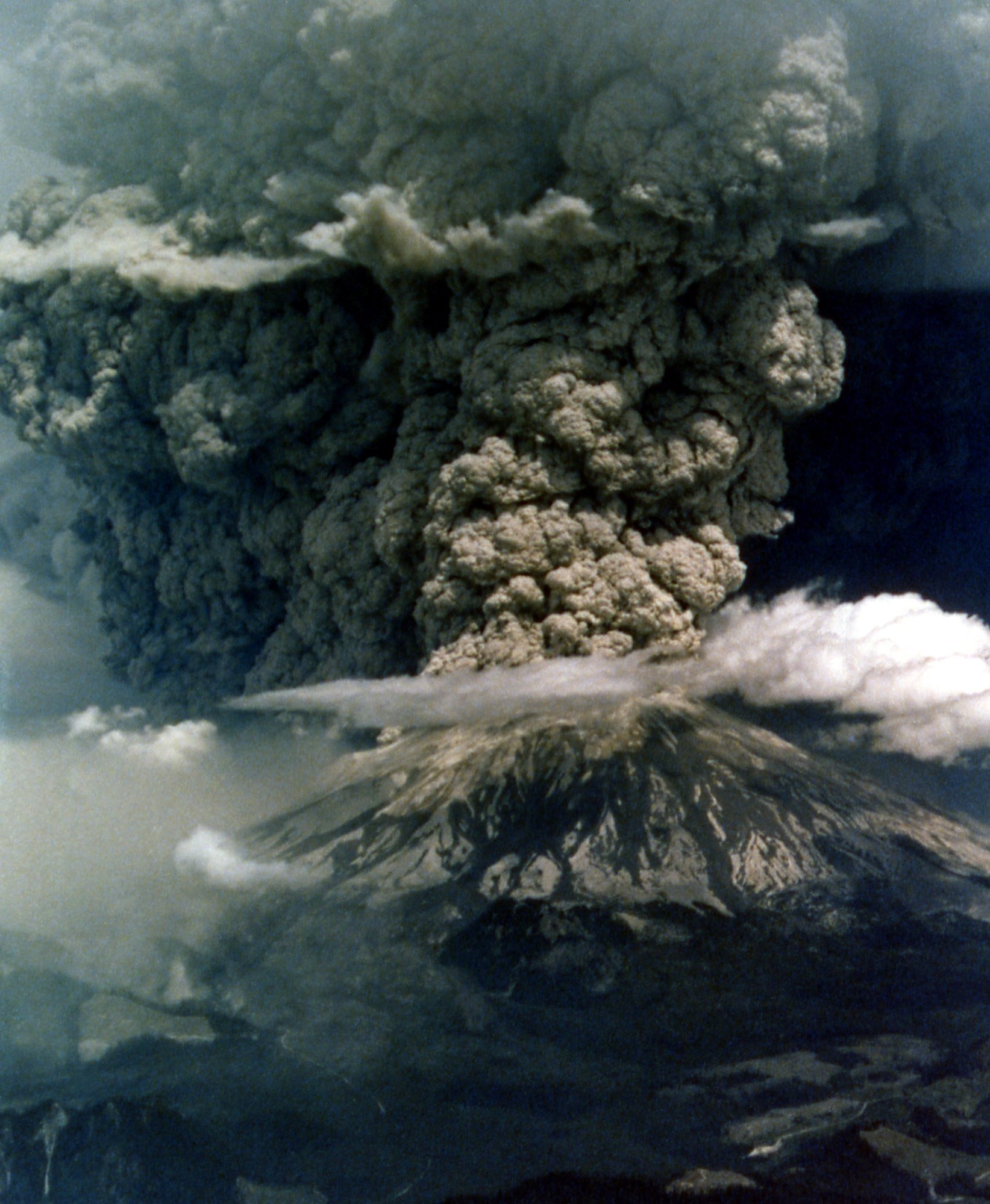
It’s a beautiful, quiet morning with spectacular weather, and then suddenly it isn’t. An earthquake strikes, the bulge gives way, and the volcano blows up and out.

Mount St. Helens in eruption. Aerial view of base of eruptive column, crater rim at right. Shows “cauliflower” effect in column. 1235 hrs PDT. Skamania County, Washington. May 18, 1980. Caption and image credit: USGS
This actually isn’t a particularly large eruption. Between the lateral blast, Plinian ash column, and the pyroclastic flows, it totals only about 1.4 cubic kilometers of material. Barely a VEI of 5. But if you’re in it, it seems large enough to have swallowed the world. It is, indeed, cataclysmic.
42 for Loowit’s 42nd vol. 4: Menacing May
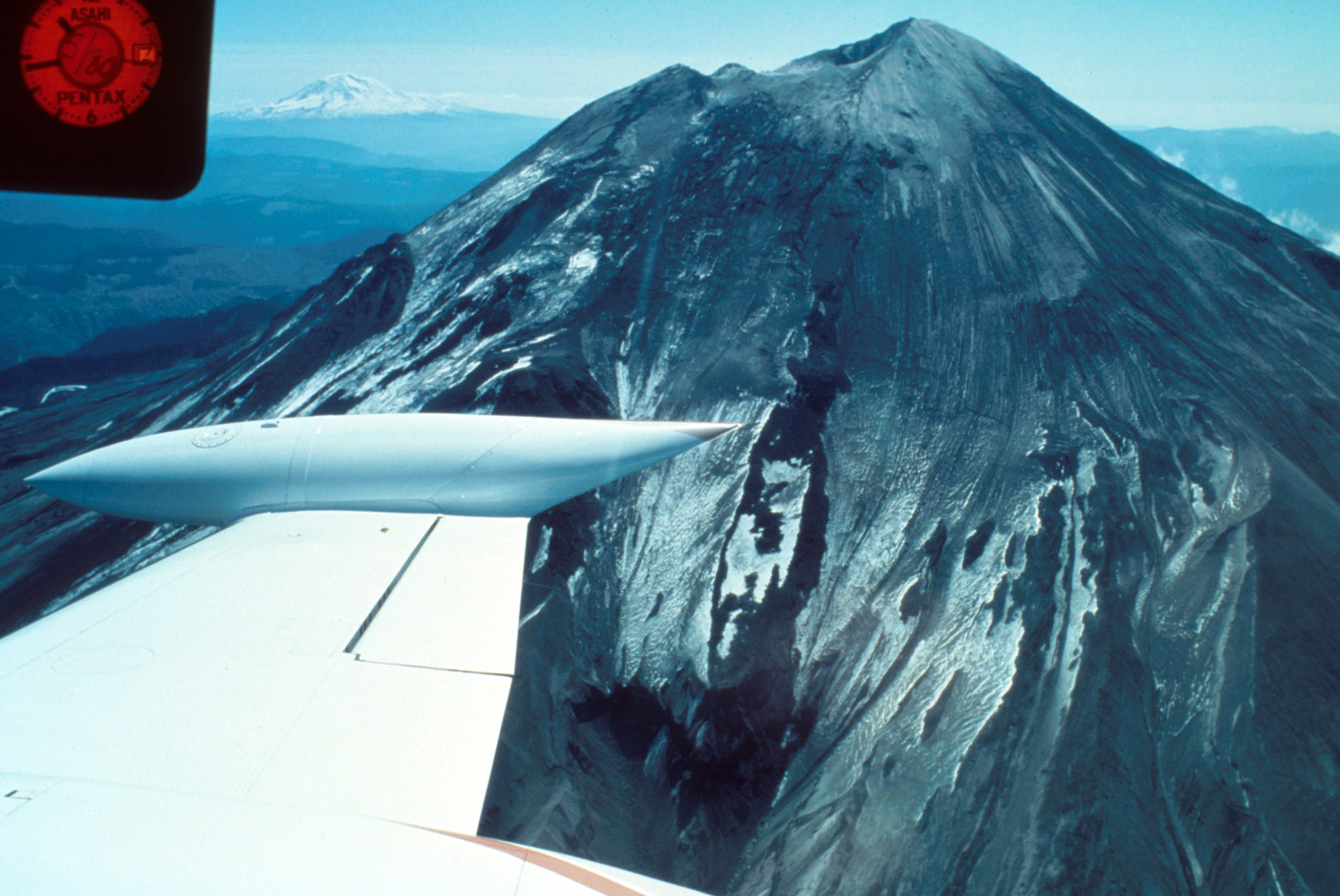
May had begun with an ominous quiet.
Ominous? Surely a restless volcano quieting down is a good thing!
Yeah, not when you’ve got one flank of the mountain growing a bulge like a demonic pregnancy and displaying worrying new thermal anomalies. Add in earthquakes and dramatic swelling, and you’re sure the volcano is ready to pop.

Geodimeter station at Toutle Canyon near Mount St. Helens. Skamania County, Washington. May 2, 1980. Caption and image credit: USGS
[Monty Python voice] Look at the bulge! (more…)
42 for Loowit’s 42nd vol. 3: Ominous April
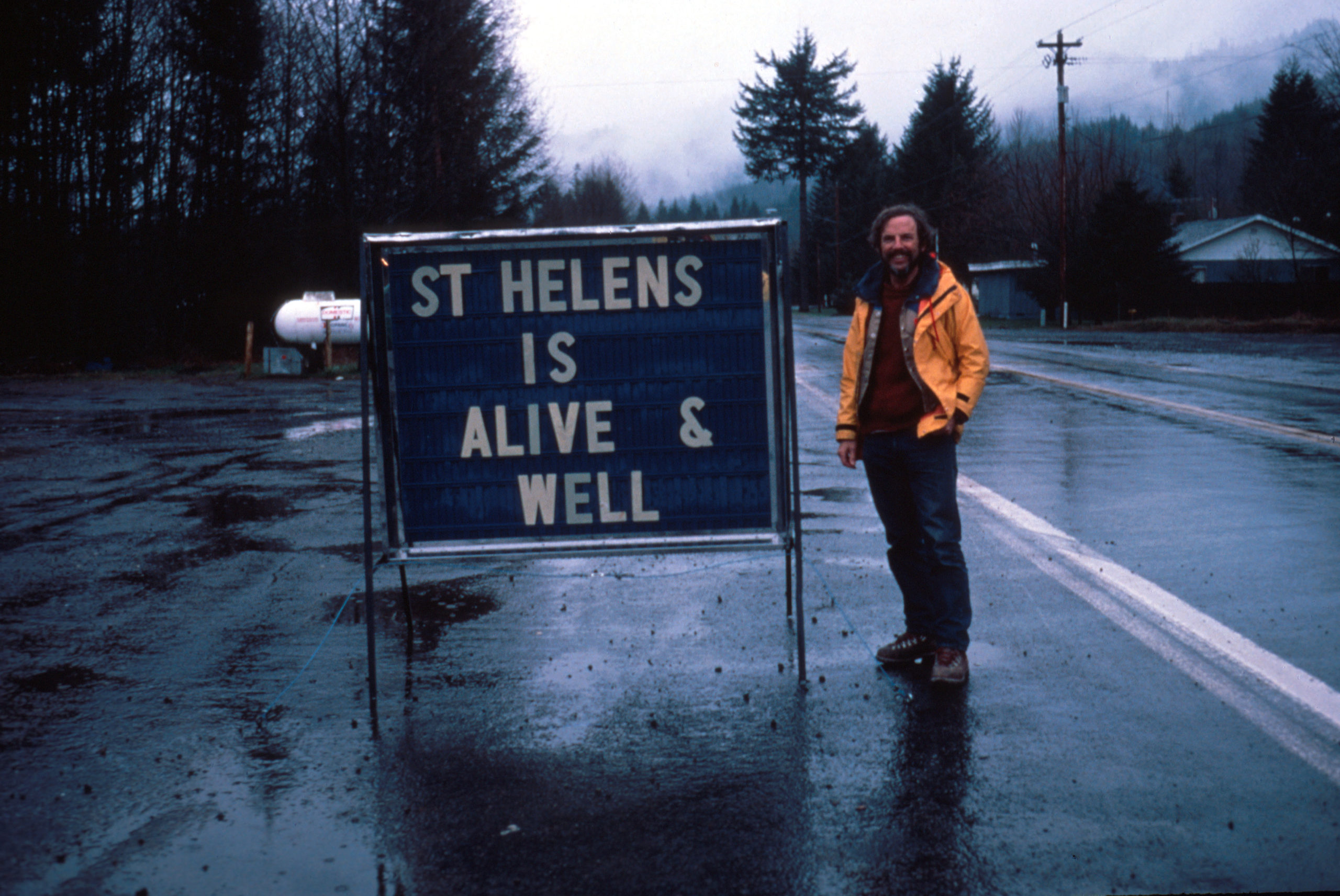
For the people who lived and worked on the flanks of Loowit (Mount St. Helens), her awakening was both curse and blessing. Living with a restless stratovolcano isn’t safe nor comfortable. But the tourism it draws is great for the local economy. Locals leaned in, creating funny hats and shirts, renaming menu items, and finding other creative ways to capitalize on her activity.
For the scientists who flocked to her, it was the chance of a lifetime.

Aerial view of Mount St. Helens and drifting plume, from northwest. Photo taken from U.S. Forest Service observer plane at 12:32 p.m. Skamania County, Washington. April 4, 1980. Caption and image credit: USGS
Volcanologists flocked to her slopes, installing equipment, taking measurements and photos, and flying over the summit as steam and ash spurted into the sky. They’d seldom had a chance to study an actively erupting composite cone so conveniently close to highways and large cities. Loowit was wonderfully accessible, and easy to observe, even in the Pacific Northwest’s capricious early spring weather. (more…)
42 For Loowit’s 42nd vol. 2: March Awakening
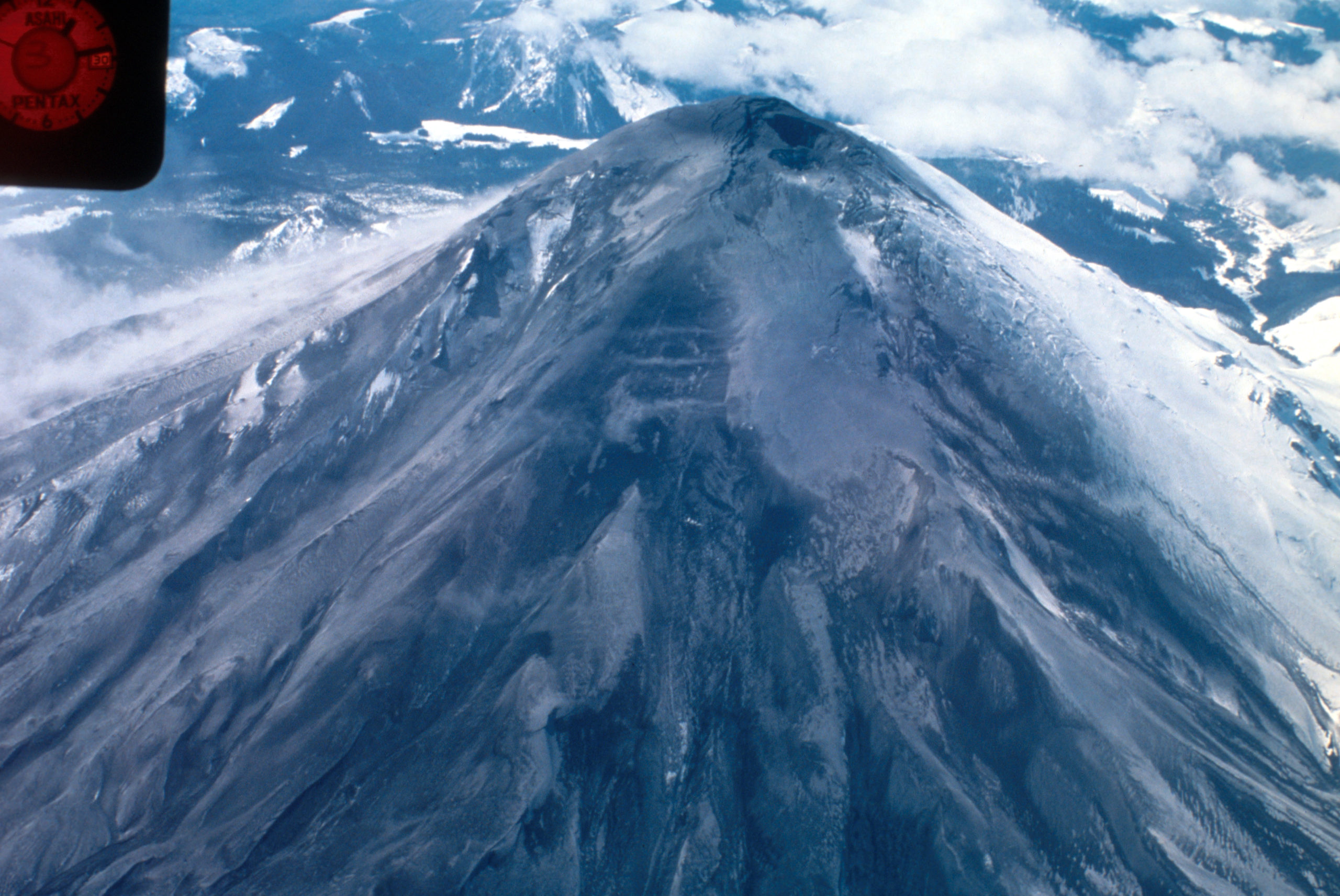
There’s this old saying about March: “In like a lamb, out like a lion.” This turned out to be very true in Loowit’s case as the 1980s began.
After over a century of peaceful slumber, Loowit (Mount St. Helens) began to wake. Seismic activity is nothing new around volcanoes, but this swarm was intense enough to shake the snow from her summit.

North side of Mount St. Helens, Washington, as of 24 March 1980. Numerous snow avalanche fracture scarps may be related to continued earthquake shaking. No signs of volcanic activity are evident. Caption and image credit: USGS
She still looked lovely and serene, but as March waned, signs became increasingly clear that magma was on the move in a serious way. (more…)
42 for Loowit’s 42nd vol. 1: Pre-1980 Majesty
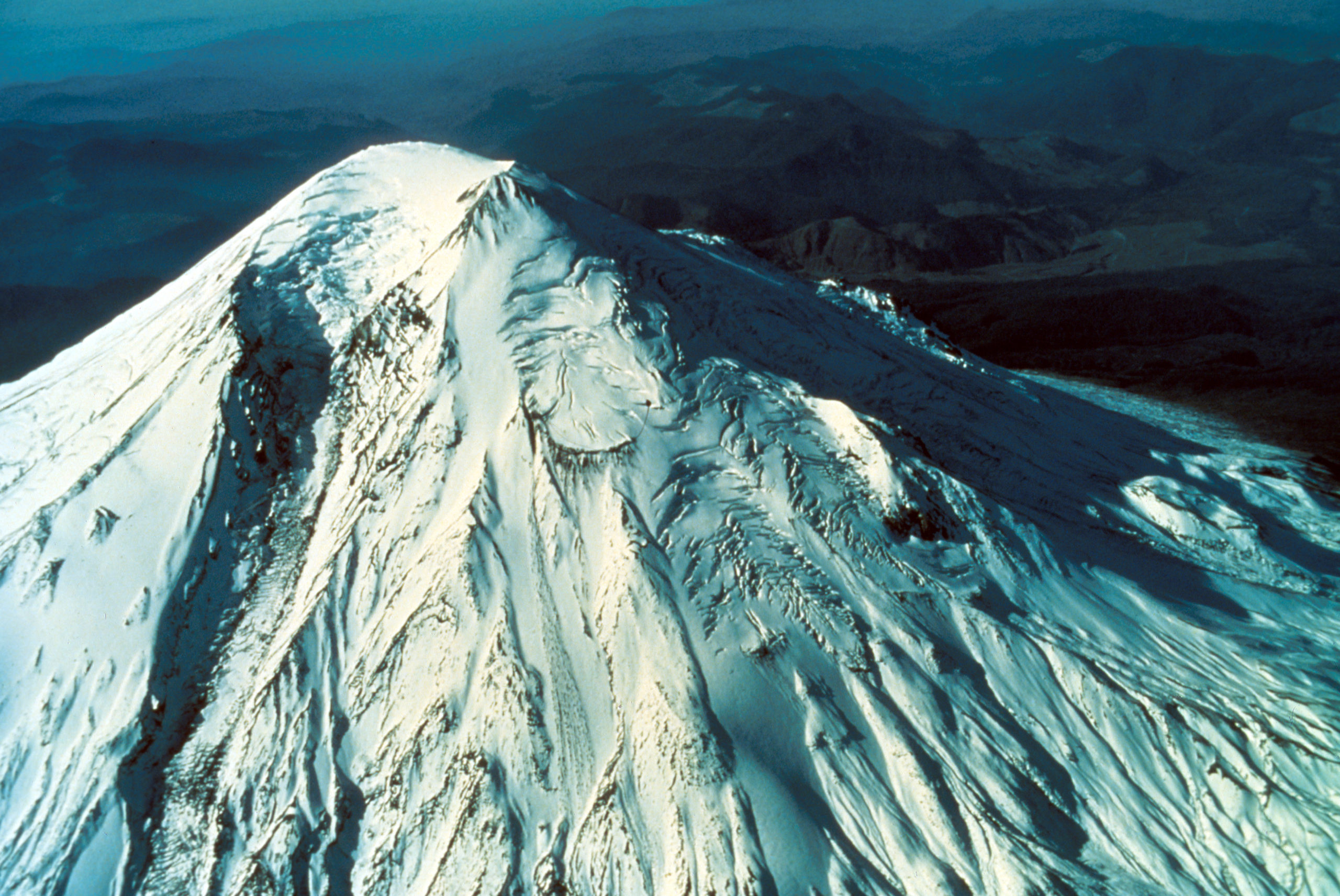
What’s the answer to life, the Universe, and how many years it’s been since Loowit (Mount St. Helens) erupted? Why, 42, of course! We’ve plundered the archives of the United States Geological Survey and the US Forest Service for 42 of the best historical photos, plus bonus featured images.
Grab your towels and join me on an epic journey back to the 20th Century, in those years when plate tectonics was still in its infancy, volcanology was still young, and Loowit had yet to stir.
Why La Palma is Like This vol. I: The Seamount that Soared
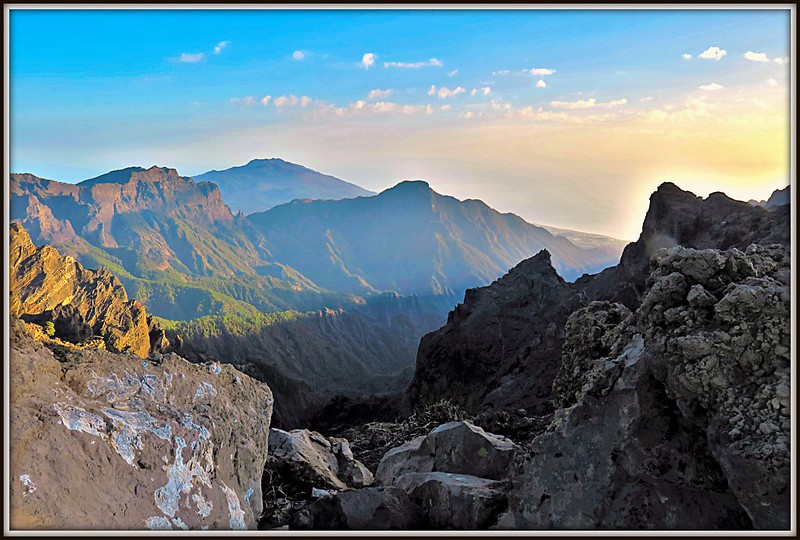
This post first appeared on Patreon. To get early access, plus exclusive extras, please visit my Patreon page.
Now that we’ve got the geologic context of the Canary Islands as a whole figured out, it’s time to zero in on La Palma. How did she get here? Why are all the recent eruptions happening only on one half of her? What might be in store for the future? Does the fact that the most recent eruption is the longest and most voluminous of her entire recorded history mean the island is doomed? And is her active volcanic ridge, Cumbre Vieja, going to fall into the ocean and wipe out the East Coast of North America?
(I won’t keep you in suspense on that last one: the answer is almost certainly a resounding no. So while we’ll talk a bit about former collapses that have shaped the island, we won’t be spending any time on the megatsunami theory. Sorry not sorry.)
A Brief History of La Palma
La Palma is the second-youngest Canary island, and is still growing. She is, in fact, the most vigorously volcanic of the Canary Islands, boasting the most eruptions on record since the Spanish settlers arrived. And that’s just the last 500-ish years of her history: she’s actually about four million years old, if you count from her birth as a bouncing baby seamount. Nearly all of those years involve very hot rocks. (more…)
A Kilauea Thanksgiving
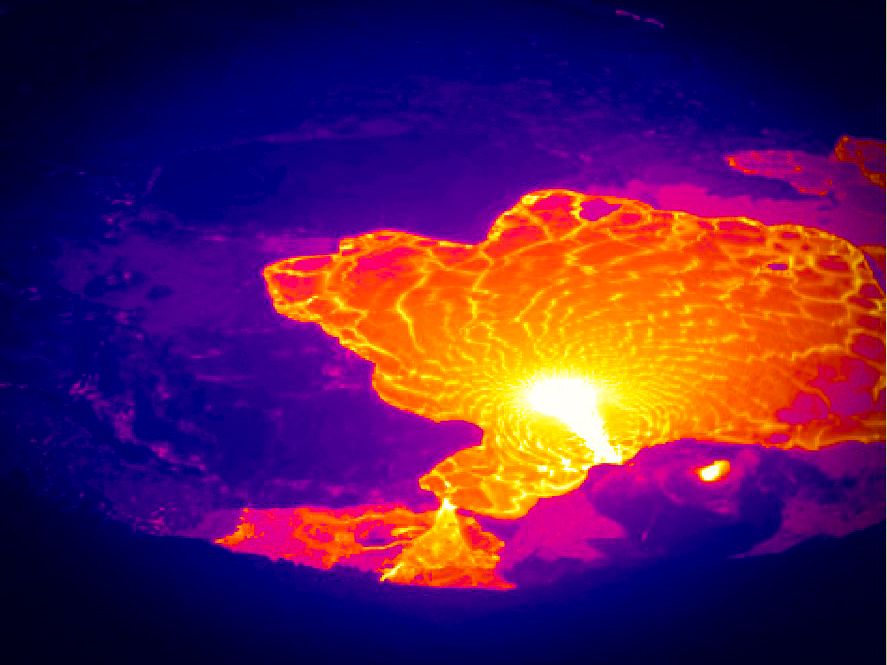
Hello, my lovely people! It’s American Thanksgiving, and hopefully most of us subject to it have survived without too many kitchen mishaps and family feuds. If you’ve spent it alone, I hope you’ve had a lovely bit of solitude. And for those of you who, like me, worked the day, I hope everything went as smoothly as a holiday can.
Let us give thanks to Tūtū Pele, who has provided us with this lovely and relatively safe ongoing eruption in her home on Kilauea volcano:
A few days ago, I noticed a fairly large although fleeting increase in the output of lava from the summit vent. According to the USGS, it lasted just a few hours, and then all went back to the current normal. But it sure did look neat in the summit webcams! I grabbed the relevant bits and slowed them down for you.
Here ’tis in the thermal cam: (more…)
Why the Canary Islands are Like This
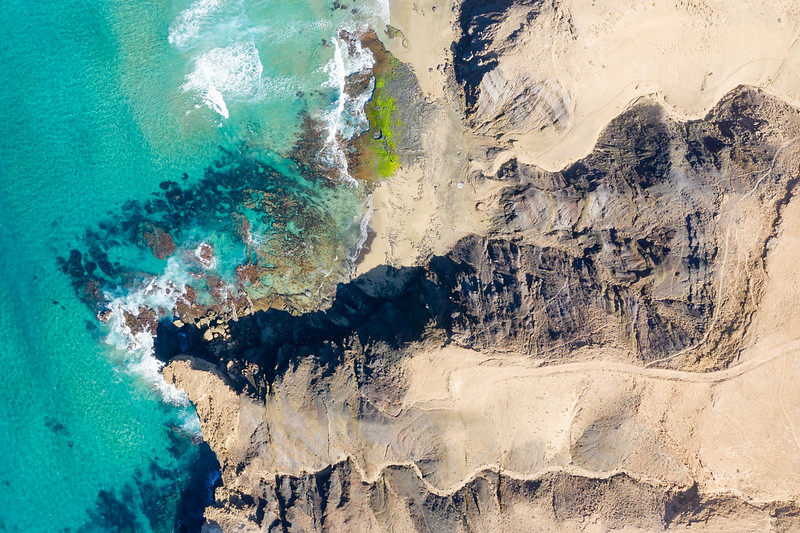
This post first appeared on Patreon. To get early access, plus exclusive extras, please visit my Patreon page.
The current eruption on La Palma in the Canary Islands is now over a month old. Already the island’s largest in a hundred years, it’s giving no signs of stopping just yet. Volcano lovers have thrilled to its spectacular Strombolian explosions. Residents have endured disruption, displacement, and loss of homes and livelihoods. Dogs trapped by lava flows had to be fed by drone before they were taken to safety in a daring and mysterious rescue. Living with a live volcano is far from easy and seldom safe.
Plenty of news agencies, vloggers, and blogs are keeping us up to date on the progress of the current eruption. I’m going to take us deep into the past, on a journey into the island’s origins and evolution. We’re going to see the slow, steady pas de deux between a mantle plume and the plate above it. We’ll watch underwater volcanoes go subaerial, building new land, and see catastrophic collapses tear their confections down. We’ll learn the life stages of a Canary Island, and by the end, we’ll know the broad outlines of La Palma’s destiny.
In the end, we’ll see that this current eruption is as much an act of creation as it is destruction.

Mirador de La Tarta, Tenerife. Yes, it’s literally called a cake! The white layer is pumice, the black layers are basaltic scoria, and the reddish-brown layers are oxidized basaltic tephra. Credit: H. Zell (CC BY-SA 3.0)
Madame Pele Breezes Back In
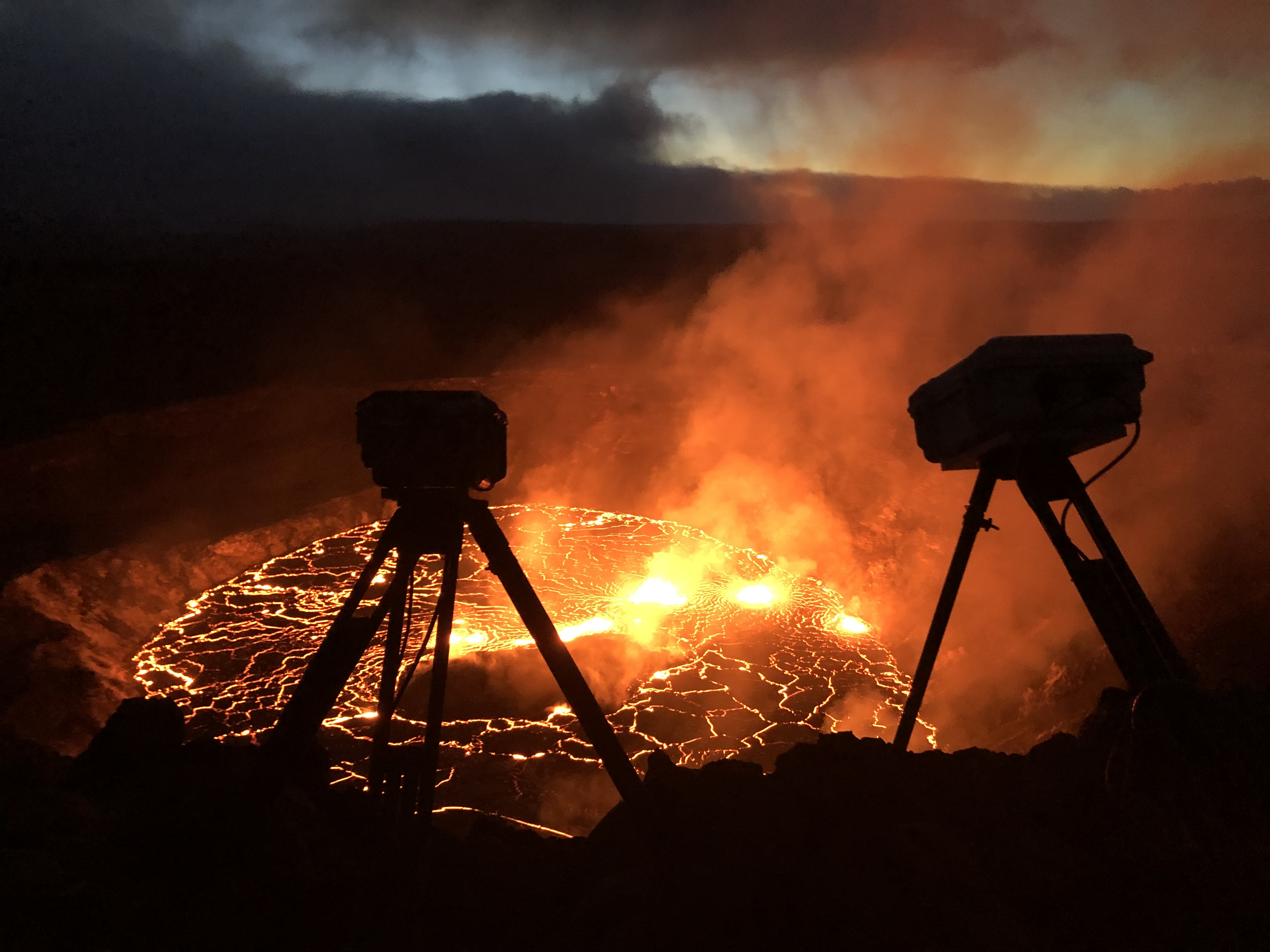
This post first appeared on Patreon. To support this site and gain early access to select posts, plus behind the scenes, sneak peeks, and exclusive content, become a patron today.
Allow me to set the scene: bugger-all was going on at Kilauea Volcano. Madame Pele had shut up shop in May and taken a luana iki (little rest). Perhaps she paid a visit to Iceland’s bouncing baby shield volcano. She may have stopped by La Palma to give her cousin some encouragement.
Back at Kilauea, there were a few rumbles in late August, with an intrusion of magma to the summit. But after that delivery, nothing much happened for most of September. It seemed to many that Pele’s luana iki might turn in to a long winter’s nap.
Madame had no such plans.

Timelapse showing the onset of the eruption. Watch the lower right tip of the island at the beginning – that frame is looped so you can see the uplift right before the vent opens. Click here for a full-size image. Credit: USGS
The Lowdown on LAZE: La Palma Eruption’s Most Recent Hazard
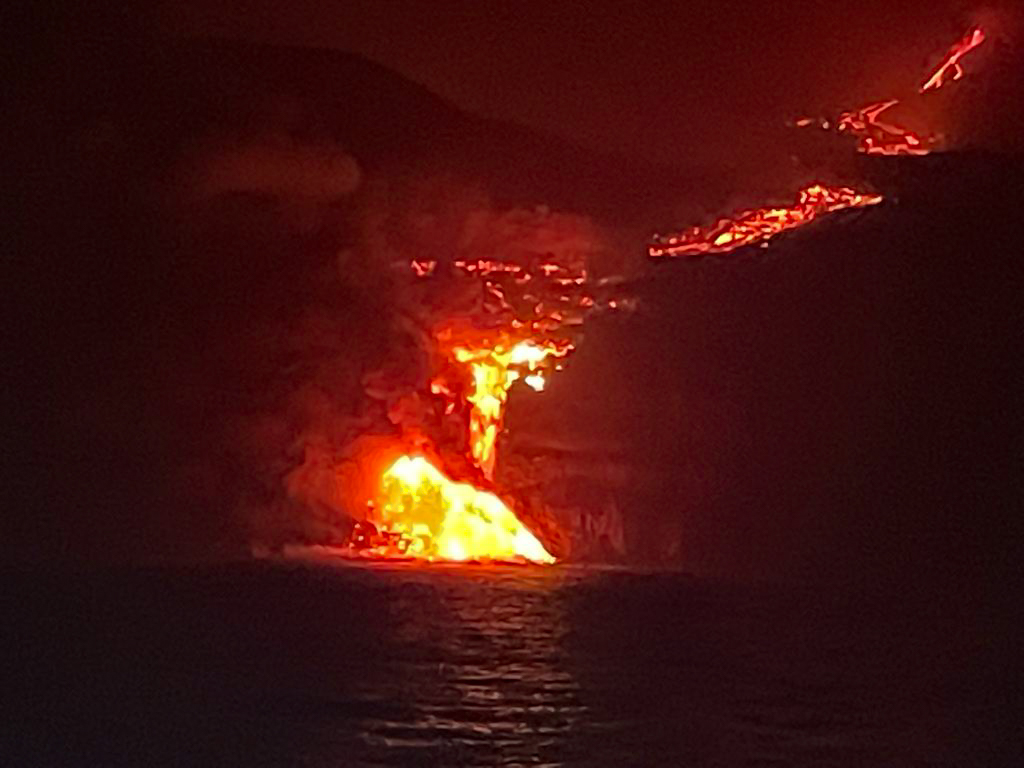
The lava flow from La Palma’s ongoing eruption has reached the Atlantic Ocean. The news is full of people talking about how hazardous this is: you can get all kinds of explosive interactions between water and molten rock. There’s also the little matter of LAZE. Now seems like the perfect time to bring you this article, first published at Scientific American Blogs, telling you what to expect from those dense white plumes.
And I’d also like to take this opportunity to remind you why it’s a terribad idea to sail too close to an ocean entry. Keep your distance!
Kilauea’s most recent lava flows reached the sea over the weekend, and they’ve been beach bumming ever since. Few things are as dramatic as molten rock contending with seawater. We’ll be talking about all the neato things that are happening and that we may see if the eruption continues. We’re starting with LAZE, which in this case isn’t something you do on a hot summer afternoon. It’s this:

A dense LAZE plume rises from the Pacific Ocean during Kilauea’s 2018 eruption. Credit: U.S. Geological Survey
When blazing hot lava meets seawater, the interaction between them boils the water and produces enormous plume of mist, called LAZE (lava haze). These plumes are, of course, mostly water vapor, but they are so much more than that. They’re acidic beasts carrying appreciable amounts of hydrochloric acid, hydrofluoric acid, sulfate anion, carbon dioxide, and nitrogen dioxide, plus traces of volcanic glass and other particles. Even if you could find a safe place near where the lava is pouring into the ocean, you wouldn’t want to be hanging out there without industrial-grade protection.
Sounds super scary, right? Well, it’s concerning. But don’t panic. It, like so many of Kilauea’s other dangers, is something you can protect yourself against with a little common sense and caution. And it’s really pretty neat. (more…)

